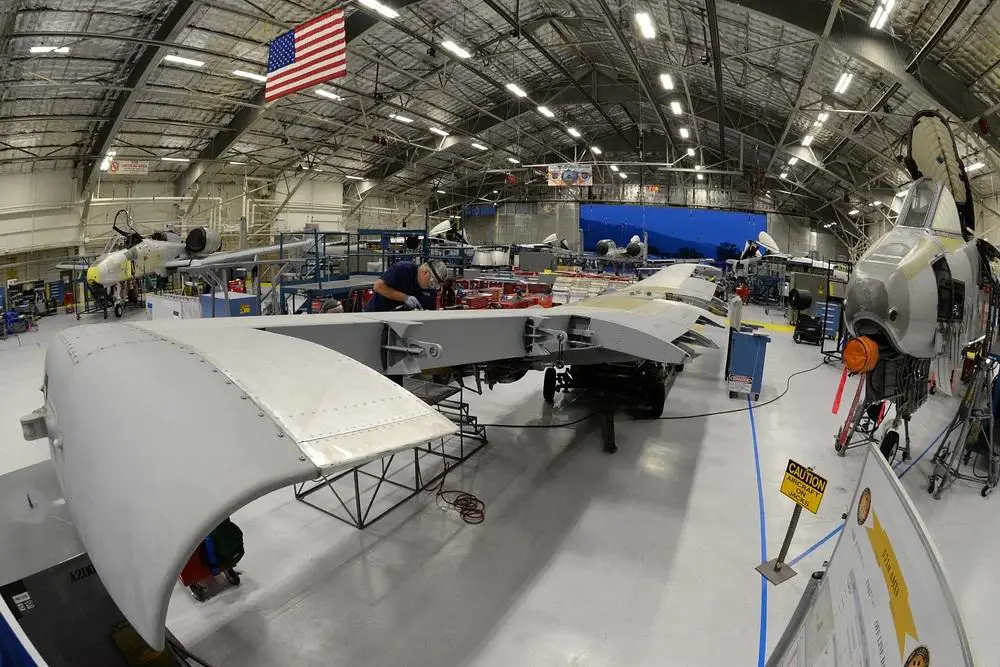Boeing, in partnership with Korean Aerospace Industries and other key suppliers, has delivered the first new wing set for the A-10 Thunderbolt II fleet to the U.S. Air Force. The wing set arrived earlier this month to Hill Air Force Base in Ogden, Utah, where the Air Force has started aircraft integration. Boeing was awarded the contract in August 2019 and is currently working to provide the Air Force with 50 wing sets. Each wing set consists of outer wing assemblies, center wing assembly, control surfaces and the fuselage integration kit. The upgraded wings are more durable, efficient, and easier to maintain, extending A-10 flying life to 10,000 hours.
“The A-10 serves a critical role for the Air Force and Boeing is proud to extend our legacy of supporting the Thunderbolt and its mission. In partnership with the Air Force and our established supply base, we have started full rate production and are actively supporting the customer’s installation schedule,” said Dan Gillian, vice president of U.S. Government Services for Boeing Global Services.
Boeing is working diligently to deliver greatly needed new wings for the A-10 fleet,” said Lt. Col. Jaclyn Melton, materiel leader for A-10 Programs in the A-10 System Program Office at Hill Air Force Base.

The re-winging of the A-10 comes as the U.S. Air Force continues its push to retire the attack aircraft, which remains beloved by many. The A-10 wing program was previously a dry line, with tools and equipment housed in long-term storage. Boeing Global Services revived the tooling and activated the supply base within 12 months of contract award. The company’s previous experience with the A-10 includes delivering 173 enhanced A-10 wing assemblies under a separate contract. Congress has repeatedly blocked any efforts to sunset the A-10 and instead have funded the wing replacement program, trying to keep the close air support aircraft going through the 2030s.
The Fairchild Republic A-10 Thunderbolt II is a single-seat, twin-turbofan, straight-wing, subsonic attack aircraft developed by Fairchild Republic for the United States Air Force (USAF). In service since 1976, it is named for the Republic P-47 Thunderbolt, a World War II-era fighter-bomber effective at attacking ground targets, but commonly referred to as the “Warthog” or “Hog”. The A-10 was designed to provide close air support (CAS) to friendly ground troops by attacking armored vehicles, tanks, and other enemy ground forces; it is the only production-built aircraft designed solely for CAS to have served with the U.S. Air Force.
















